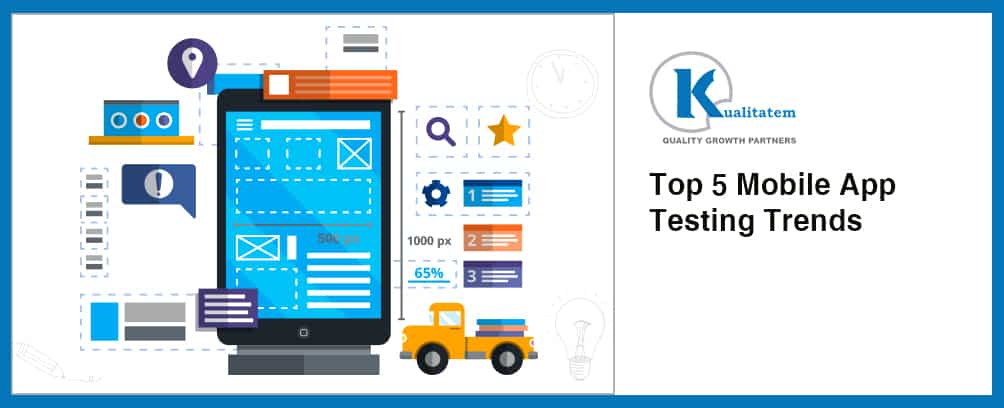Top 5 Mobile App Testing Trends

- March 30, 2016
- admin
One of the most significant technological advancements of our time has been the discovery of the cell phone. From being considered a luxury, it has evolved into a basic necessity of life. Mobile phones have become the main tools for communication for everyone so much so that it is estimated that by the year 2017, the number of mobile phone users is expected to reach 4.77 billion. With the increase in the number of users, software companies too are in a rush to produce apps that take the market by storm.
The realization that these apps need to be tested for any discrepancies is also the need of the hour. Some have learned it the hard way and some are still in the process of doing so. Mobile app testing is absolutely necessary for an app to run efficiently and effectively on the hand held devices. Businesses need to create a strong, comprehensive strategy to have robust mobile operating systems in place. The following trends must be considered in the future to streamline the mobile app testing process.
Security Concerns
Many people are in a habit of storing their personal information in the mobile phones. Some even tend to save sensitive data on these devices which makes it vulnerable to security breaches and identity thefts. Some apps are designed in a way that they require users to share information as well which again is a cause for concern in terms of security. Enterprises too need to educate their developers who seem less concerned with security and more so with the functionality of an app. Gartner has predicted that through the year 2017, almost “75 percent of mobile security breaches will be the result of mobile application misconfigurations, rather than the outcome of deeply technical attacks on mobile devices.” Therefore, Testing should be conducted at all levels of application development and design to secure user’s data and privacy.
Mobile Payments
Mobile commerce has become an integral part of the businesses today. Mobile commerce applications are launched in the market to fetch good sales and revenue. These apps should allow users to make their payments through credit card, debit card, Google Wallet and Apply Pay. At the same time they need to ensure that they are done in the most secure and effective way. Testing comes into play again.
Mobile Infrastructure-Cloud Platforms
The rapid advancement in technology demands that the app developed should be tested across various platforms and devices. Enterprises end up spending a lot as they have to purchase these devices but with cloud enabled platforms they don’t have to go through this exercise. The testers are able to assess the performance of an app across multiple devices with the help of cloud. So in order to save upon time and cost, companies are expected to invest in cloud computing in the near future.
Automation Testing
Although manual testing is useful in many ways, however it is still a slow and costly process. Automation testing helps to run a suite of tests in minutes and seconds. By speeding up the testing process, you can expand the test coverage to make sure that you are releasing an error-free app in the market. Automated testing can surely save you time and money. In a nutshell, automated tests make our lives easier by ensuring that quality is maintained from the development stage of an application to the testing process.
Internet of Things
Internet of things has undoubtedly become the part and parcel of the daily routine of the modern man. Our connection to the virtual world is made possible through the IoT. So businesses need to develop apps that can easily be connected to various devices as everyone wants to have access to the internet on the go. Users connection with each other is becoming more and more device dependent therefore, testing the apps on these inter connected devices is extremely important.
If companies want to have a flourishing business then it is mandatory that they should consider the necessity of testing. And in doing so they should also keep up with the current trends and practices when developing a mobile application.











